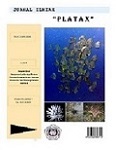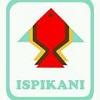Polychaeta Communities in Subtidal Zone Soft Substrate of Manado Bay, North Sulawesi
DOI:
https://doi.org/10.35800/jip.v10i1.39518Keywords:
Polychaeta, biodiversity, soft substrate, Manado BayAbstract
This study aims to analyze the structure of the Polychaeta community on the soft substrate of the subtidal zone in Manado Bay. Samples were taken by grab at 3 stations namely ST1 located at a depth of 8 m with black mud substrate; ST2 is located at a depth of 26 m with blackish sand substrate, and ST3 are located at a depth of 18 m with blackish sand as a substrate. From the three sampling stations, 27 species of 253 Polychaeta individuals were identified. Station 1, which is located near the mouth of the Bailang River, has high individual abundance but low species diversity. Station 2, which is located near the Megamas area, has moderate individual abundance but high species richness. Station 3, which is located around the Faculty of Medicine, Unsrat Malalayang, has low individual abundance but high species richness. Substrate types and anthropogenic disturbances such as enrichment of organic matter are thought to be determinants of individual abundance, composition, and species richness of Polychaeta in Manado Bay.
Keywords: Polychaeta; biodiversity; soft substrate; Manado Bay
Abstrak
 Penelitian ini bertujuan untuk menganalisis struktur komunitas Polychaeta pada substrat lunak zona subtidal di Teluk Manado. Sampel diambil dengan grab pada 3 stasiun yakni ST1 terletak pada kedalaman 8 m dengan substrat lumpur berwarna hitam; ST2 terletak pada kedalaman 26 m dengan substrat pasir berwarna kehitaman; dan ST3 terletak pada kedalaman 18 m dengan substrat pasir berwarna kehitaman. Dari tiga stasiun sampling tersebut berhasil diidentifikasi 27 spesies dari 253 individu Polychaeta. Stasiun 1 yang terletak dekat muara Sungai Bailang memiliki kelimpahan individu tinggi tetapi keanekaragaman spesies rendah. Stasiun 2 yang terletak dekat kawasan Megamas memiliki kelimpahan individu sedang tetapi kekayaan spesies tinggi. Stasiun 3 yang terletak di sekitar pemukiman belakang Fakultas Kedokteran Unsrat Malalayang memiliki kelimpahan individu rendah tetapi kekayaan spesies tinggi. Jenis substrat dan gangguan antropogenik seperti pengayaan bahan organik diduga merupakan faktor penentu kelimpahan individu, komposisi dan kekayaan spesies Polychaeta di Teluk Manado.
 Kata Kunci: Polychaeta; keanekaragaman hayati; substrat lunak; Teluk Manado
References
Begon, M. dan Townsend, C. R. 2021. Ecology from Individuals to Ecosystems. Fifth Edition. John Wiley & Sons Ltd., Oxford. 1510 hal.
Borja, A., Franco, J. dan Pe´rez, V. 2000. A marine biotic index to establish the ecological quality of soft-bottom benthos within European estuarine and coastal environments. Mar. Pollut. Bull. 40: 1100–1114.
Brusca, R. C., Moore, W. dan Shuster, S. M. 2016. Invertebrates. Third edition. Sinauer Associates, Inc., Sunderland. 1104 hal.
Day, J. H. 1967. A monograph on the Polychaeta of Southern Africa. British Museum (Natural History). London. vol 1 & vol 2, 1-878., available online at http://www.biodiversitylibrary.org/bibliography/8596
Dean, H. K. 2008. The use of polychaetes (Annelida) as indicator species of marine pollution: a review. Rev. Biol. Trop. (Int. J. Trop. Biol.), 56 (suppl. 4): 11-38.
Fauchald, K. dan Jumars, P. A. 1979 . The diet of worms: a study of polychaete feeding guilds . Oceanogr. Mar. Biol. Ann. Rev. 17: 193 – 284 .
Giribet, G. dan Edgecombe, G. D. 2020. The Invertebrate Tree of Life. Princeton University Press, New Jersey. 589 hal.
Grall, J. dan Glémarec, M. 1997. Using biotic indices to estimate macrobenthic community perturbations in the Bay of Brest. Estuarine, Coastal and Shelf Science, 44 (Suppl. A): 43–53.
Grassle, J. F. dan Maciolek, N. J. 1992. Deep-sea species richness: regional and local diversity estimates from quantitative bottom samples. The American Naturalist, 139 (2): 313-341.
Gray, J. S. dan Elliott, M. 2009. Ecology of Marine Sediments. Oxford University Press, New York. 225 hal.
Jumars, P. A., Mayer, L. M., Deming, J. W., Baross, J. A. dan Wheatcroft, R. A. 1990. Deep-sea depositfeeding strategies suggested by environmental and feeding constraints. Philosophical Transactions of the Royal Society of London. 331: 85-101.
Ludwig, J. A. dan J. F. Reynolds. 1988. Statistical ecology, a primer on methods and computing. A Willey Interscience Publications, New York. 338 hal.
Lumingas, L. J. L., Moningkey, R. D. dan Kambey, A. D. 2011. Efek stres antropogenik terhadap struktur komunitas makrozoobenthik substrat lunak perairan laut dangkal di Teluk Buyat, Teluk Totok dan Selat Likupang (Semenanjung Minahasa, Sulawesi Utara). Jurnal Matematika & Sains, 16 (2): 95-105.
Magurran, A. E. 1988. Ecological Diversity and Its Measurements. Princeton University Press, Princeton, New Jersey. 179 hal.
Mirza, F. B. dan Gray, J. S. 1981. The fauna of benthic sediments from the organically enriched Oslofjord, Norway. J. Exp. Mar. Biol. Ecol. 54: 181-207.
Moningkey, R. D., Lumingas, L. J. L. dan Rembet, U. N. W. J.. 2017. Struktur komunitas makrozoobenthik substrat lunak di zona subtidal sekitar Pulau Lembeh (Sulawesi Utara). Jurnal Ilmiah Platax, 5 (2): 105-120.
Neave, M. J., Glasby, C. J., McGuinness, K. A., Parry, D. L., Streten-Joyce, C. dan Gibb, K. S. 2013. The diversity and abundance of polychaetes (Annelida) are altered in sediments impacted by alumina refinery discharge in the Northern Territory, Australia. Marine Environmental Research, 92 : 253-263.
Papageorgiou, N., Arvanitidis, C. dan Eleftheriou, A. 2006. Multicausal environmental severity: a flexible framework for microtidal sandy beaches and the role of polychaetes as an indicator taxon. Estuar. Coast. Shelf Sci. 70: 643-653.
Pearson, T. H. dan Rosenberg, R. 1978. Macrobenthic succession in relation to organic enrichment and pollution of the environment. Oceanogr. Mar. Biol. A. Rev. 16: 229-331.
Pocklington, P. dan Wells, P. G. 1992. Polychaetes: key taxa for marine environmental quality monitoring. Marine Pollution Bull. 24: 593–598.
Rivero, M. S., ElÃas, R. dan Vallarino, E. A.. 2005. First survey of macrofauna in the Mar del Plata Harbor (Argentina), and the use of polychaetes as pollution indicators. Rev. Biol. Mar. Oceanogr. 40: 101-108.
Thrush, S. F., Hewitt, J. E., Pilditch, C. A. dan Norkko, A. 2021. Ecology of Coastal Marine Sediments: Form, Function, and Change in the Anthropocene. Oxford University Press, Oxford. 200 hal.
WoRMS. 2021. Polychaeta. Accessed at: http://www.marinespecies.org/aphia.php?p=taxdetails&id=883 on 2021-06-20.
Downloads
Published
How to Cite
Issue
Section
License
COPYRIGHT
Authors who publish with this journal agree to the following terms:
Authors hold their copyright and grant this journal the privilege of first publication, with the work simultaneously licensed under a Creative Commons Attribution License that permits others to impart the work with an acknowledgment of the work's origin and initial publication by this journal.
Authors can enter into separate or additional contractual arrangements for the non-exclusive distribution of the journal's published version of the work (for example, post it to an institutional repository or publish it in a book), with an acknowledgment of its underlying publication in this journal.
Authors are permitted and encouraged to post their work online (for example, in institutional repositories or on their website) as it can lead to productive exchanges, as well as earlier and greater citation of the published work (See The Effect of Open Access).


















